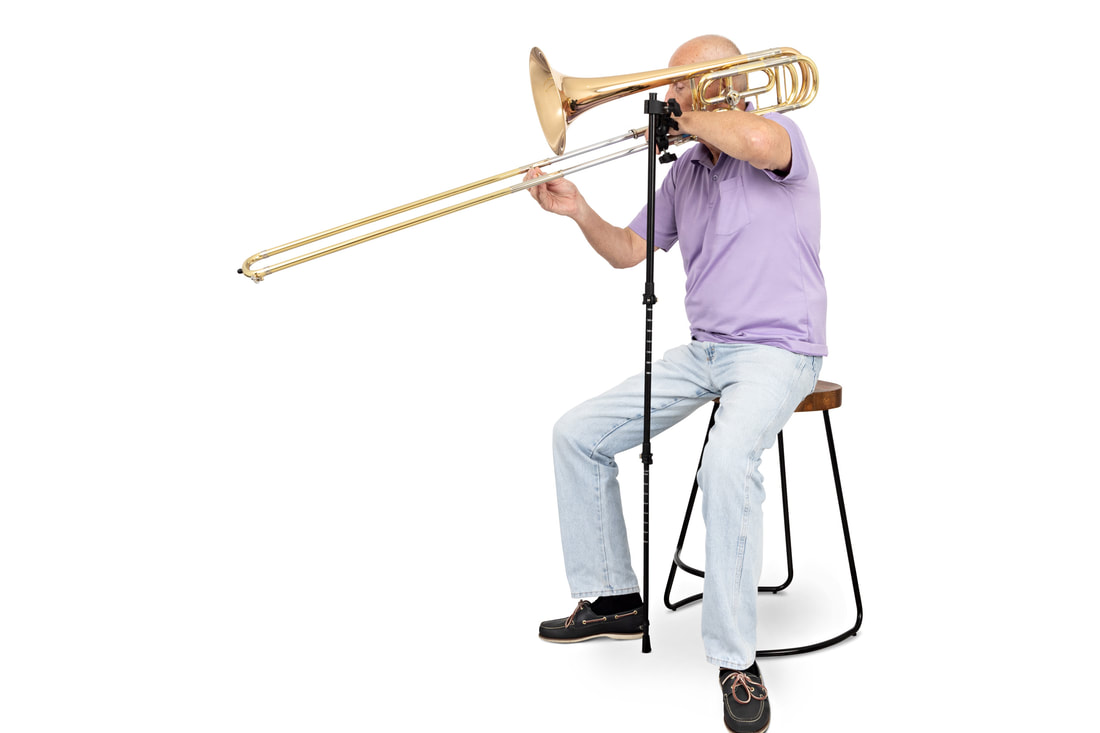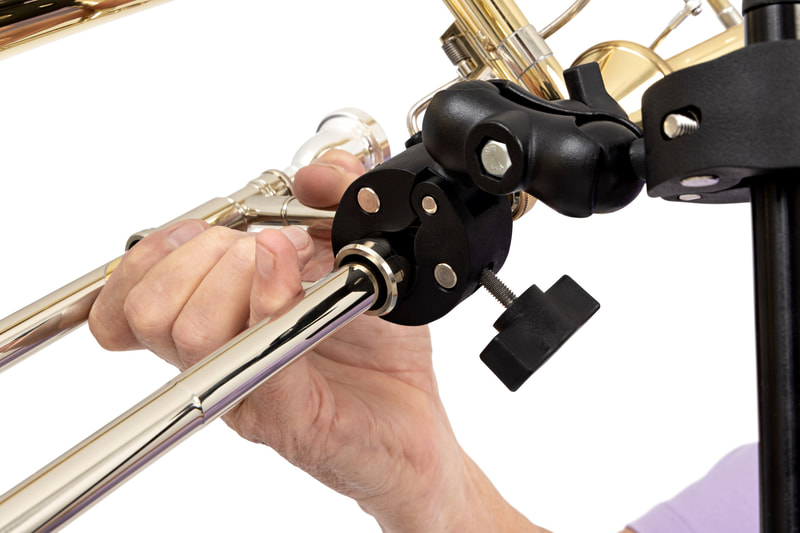A Support for Trombone & Bass Trombone
When attaching the BrassSupport to a Trombone or Bass Trombone simply tighten the clamp to the slide receiver, no permanent attachment is necessary. The player support stand is a quick, inexpensive, easy to attach, aid to playing.
Neck and back pain among brass instrument musicians is a notable concern, stemming from various aspects of the physical demands and posture associated with playing these instruments. Here are some insights and strategies for addressing this issue:
Causes of Neck and Back Pain
- Poor Posture: While playing, maintaining an incorrect posture, either standing or sitting, can lead to muscle imbalances, strain, and chronic pain. Brass players often hold their instruments in positions that may not be ergonomically favourable, leading to stress on the neck and back.
- Straining to See the Conductor: In performance settings, musicians may find themselves in positions where they have to extend or tilt their necks for prolonged periods to maintain visual contact with the conductor, leading to strain and discomfort.
- Poor Instrument-Lifting Techniques: Brass instruments vary in size and weight, and improper lifting and holding techniques can place undue stress on the spine. The repetitive nature of lifting and holding these instruments without proper support can exacerbate or lead to chronic pain conditions.
Strategies to Mitigate Neck and Back Pain
- Ergonomic Assessment and Adjustment: Musicians can benefit from ergonomic assessments that optimise their playing posture and instrument positioning. This may involve adjusting chair height, using stands for heavier instruments, or modifying the instrument’s support mechanisms.
- Physical Conditioning: Engaging in exercises that strengthen the core muscles, improve flexibility, and promote overall musculoskeletal health can be beneficial. Yoga, Pilates, and targeted strength training exercises can help develop a more supportive muscular structure to withstand the demands of playing.
- Proper Lifting Techniques: Learning and consistently applying adequate lifting techniques for heavier instruments can prevent strain. This includes using the legs rather than the back to lift and carrying the instrument close to the body to minimize leverage stress.
- Breaks and Movements: Incorporating regular breaks during practice sessions and performances to stretch and move around can help relieve tension and prevent stiffness. Micro-breaks of even a few seconds to adjust posture and relax muscles can be beneficial.
- Professional Guidance: Consulting with physical therapists, especially those specialised in working with musicians, can provide tailored strategies for managing and preventing pain. They can offer specific exercises, manual therapies, and advice on posture adjustments.
- Vision and Conducting Strategies: Addressing visual strain issues by using appropriate eyewear or adjusting stand and lighting setups can reduce the need to strain to see the conductor. Conductors and musicians can also work on communication and positioning strategies that minimize this issue.
Conclusion Chronic neck and back pain in brass instrument musicians requires a multifaceted approach addressing posture, ergonomics, physical conditioning, and proper technique. Through awareness, education, and proactive measures, musicians can significantly reduce the risk of chronic pain, enhancing their ability to perform and enjoy making music for years to come.





